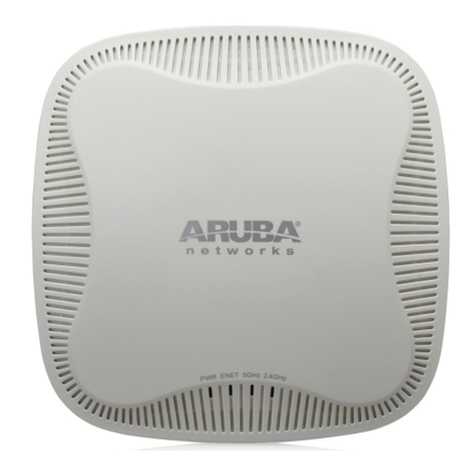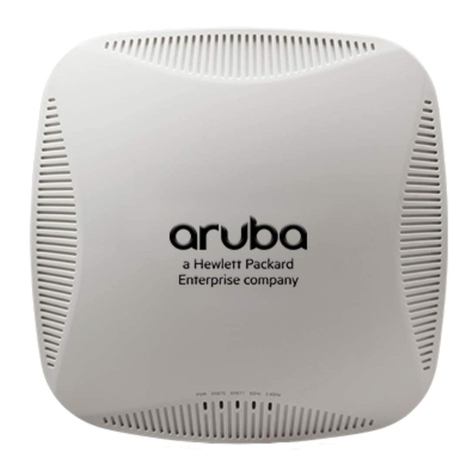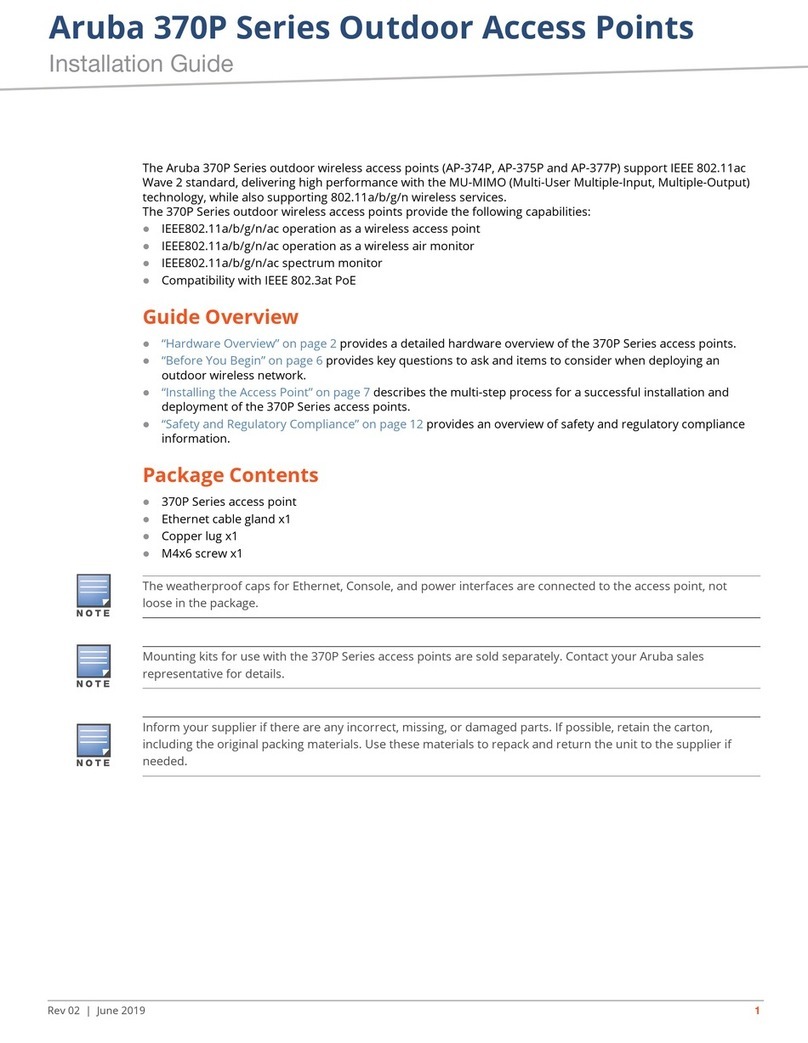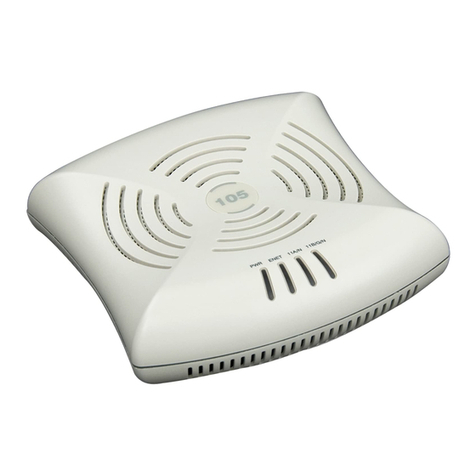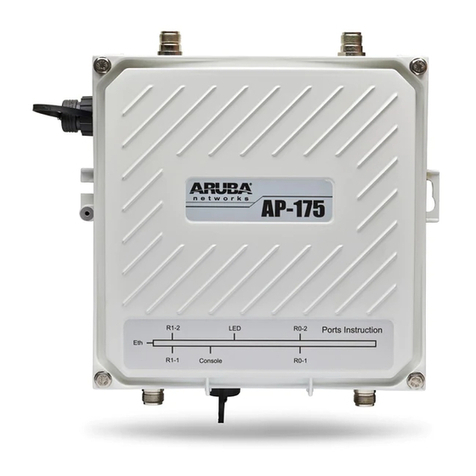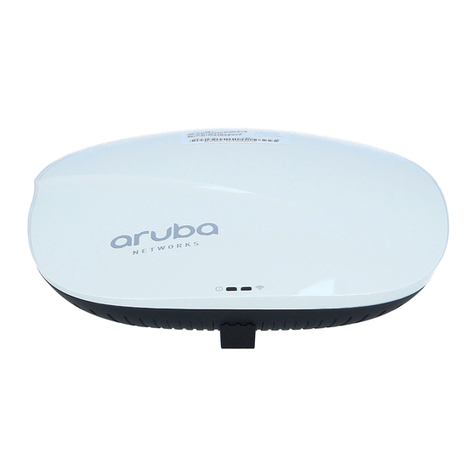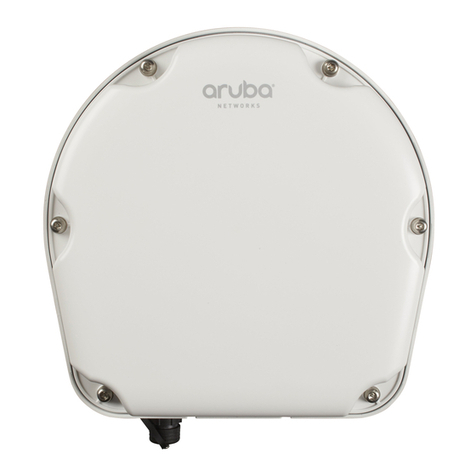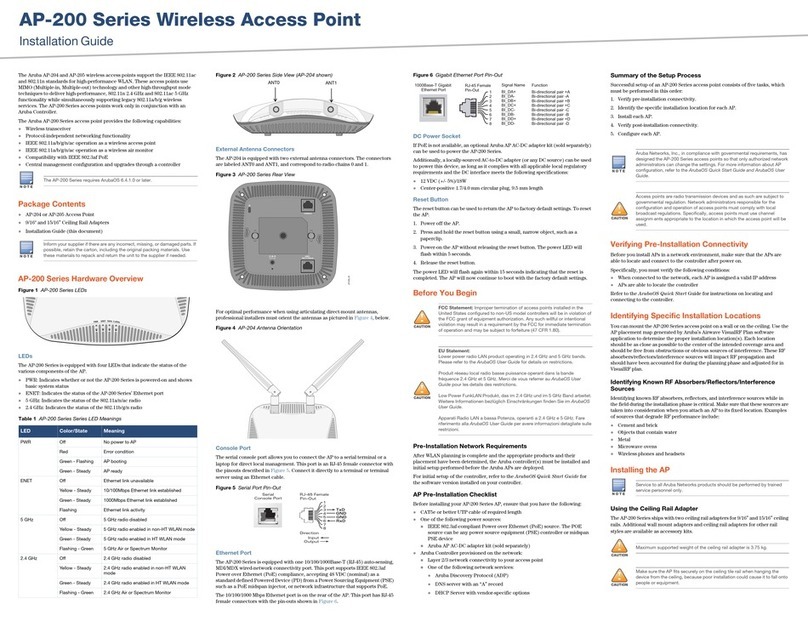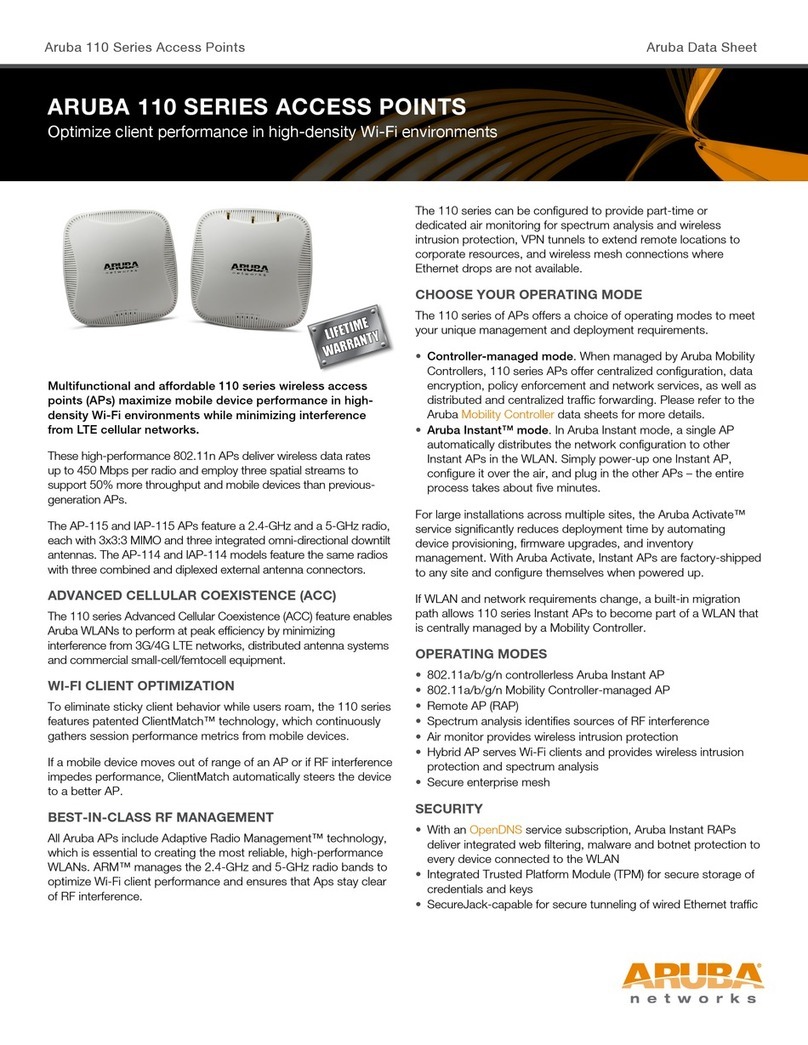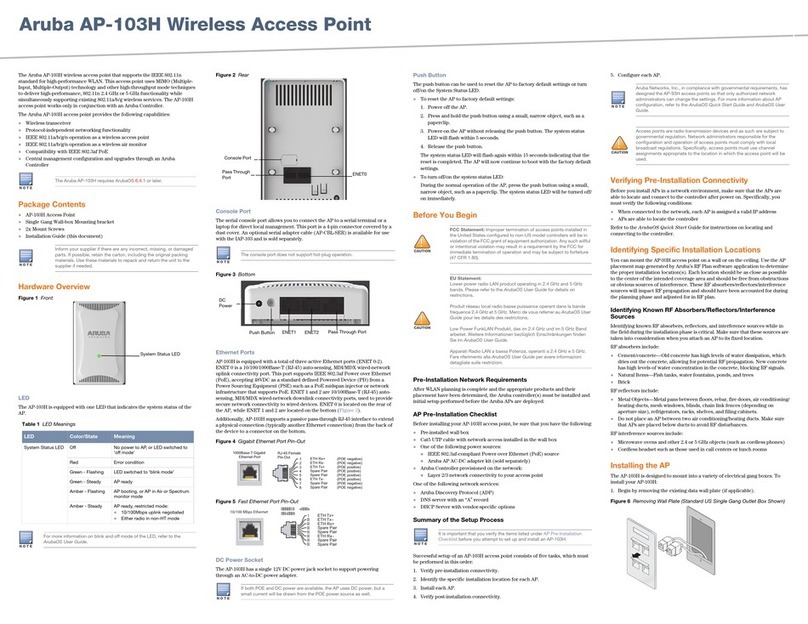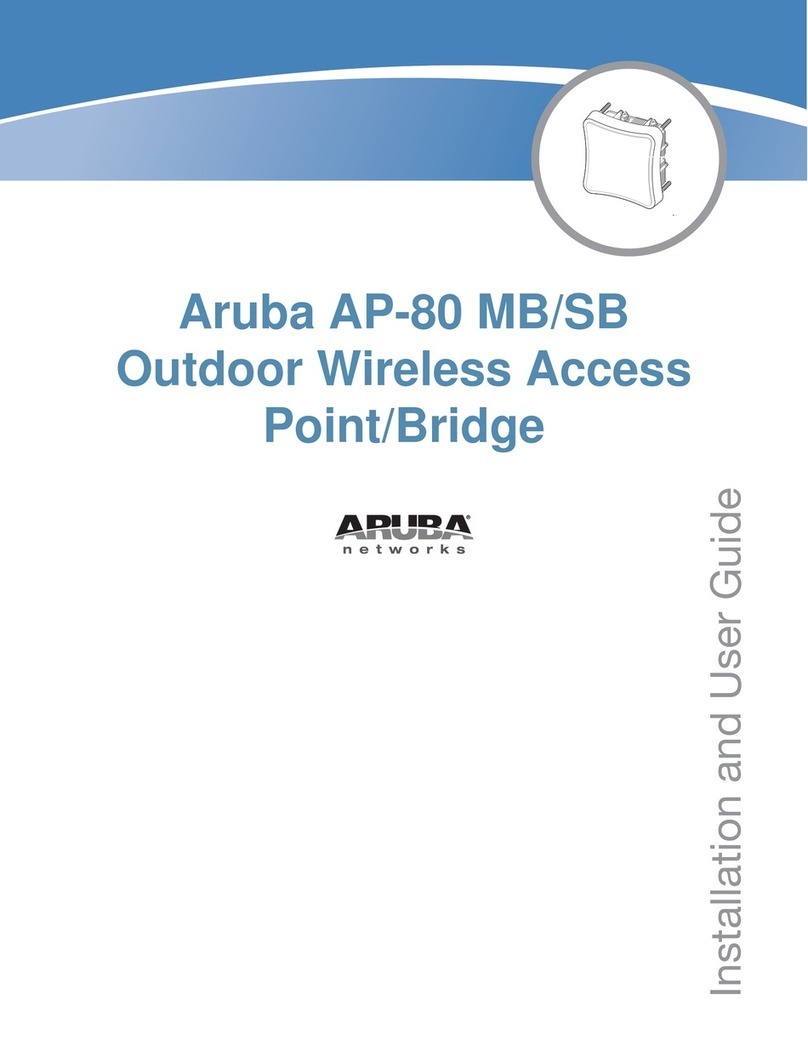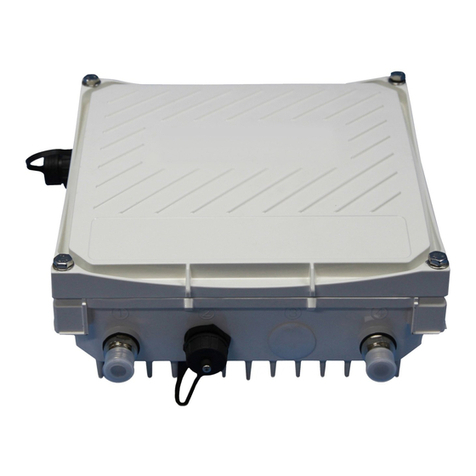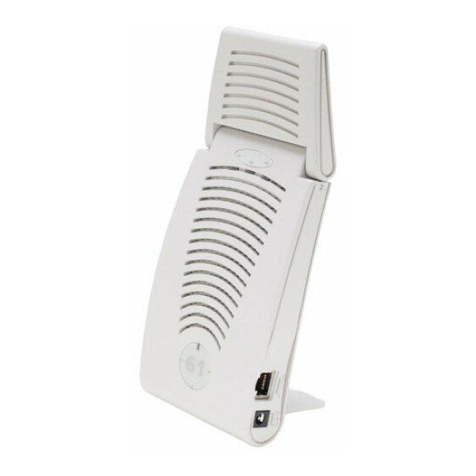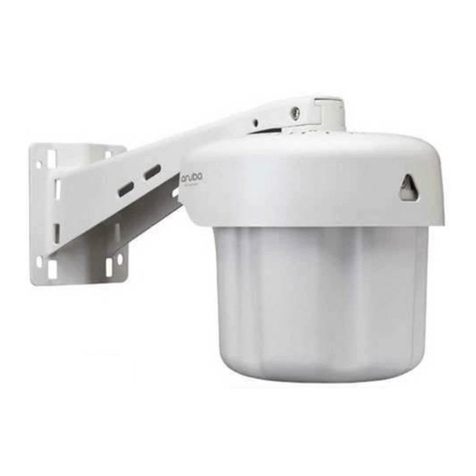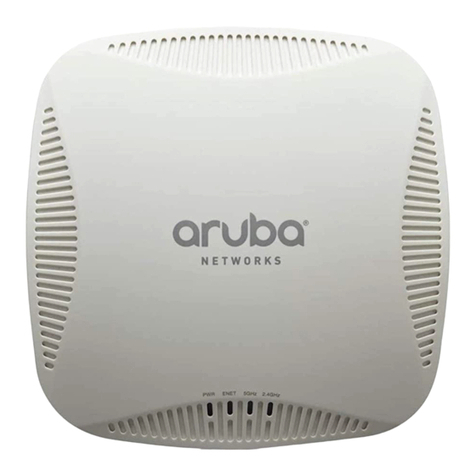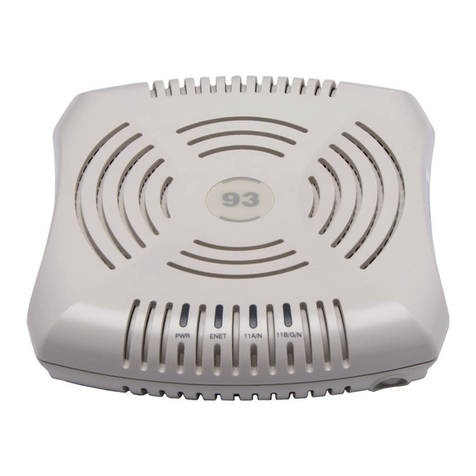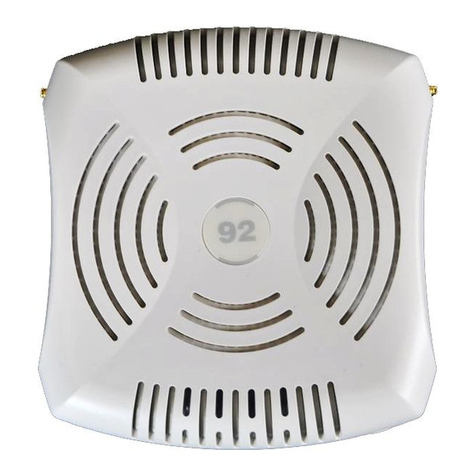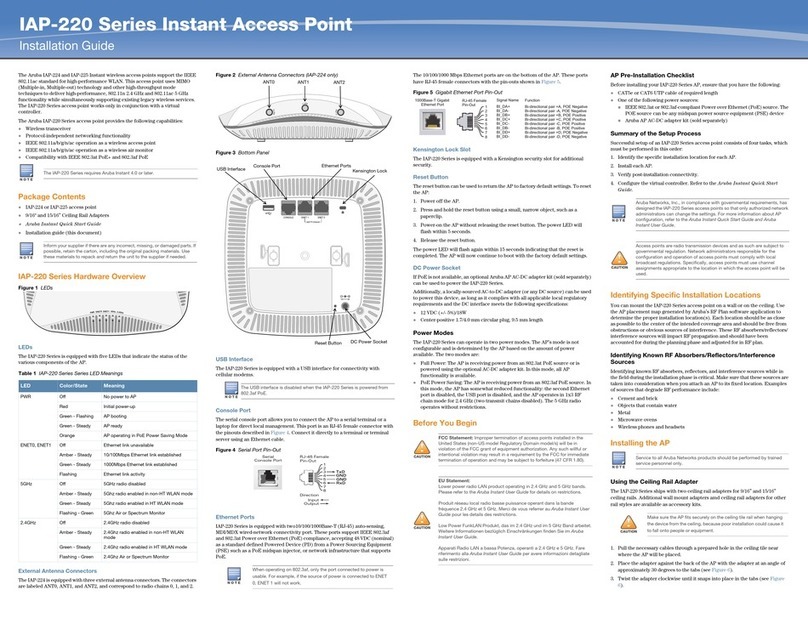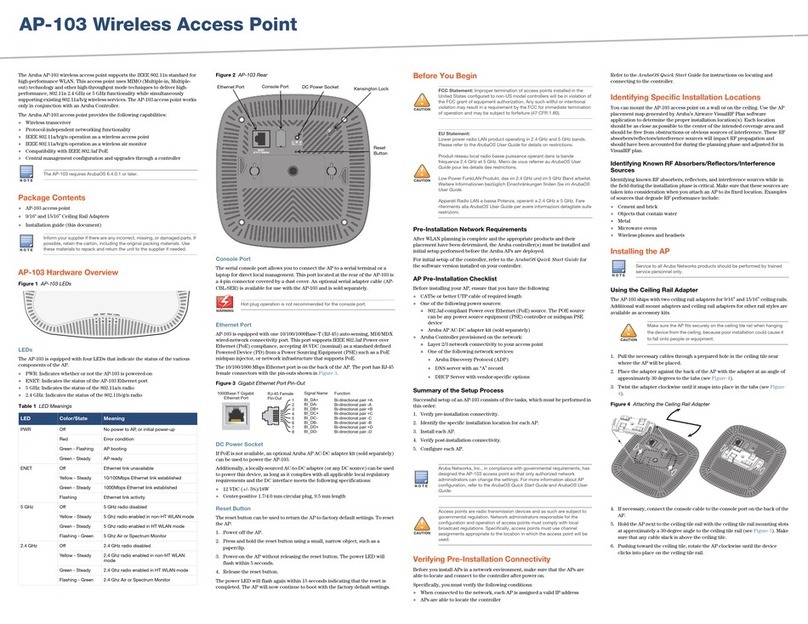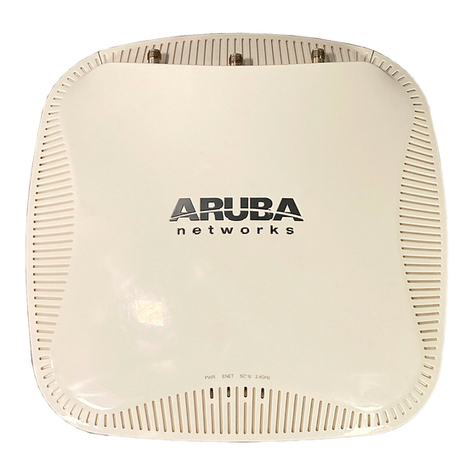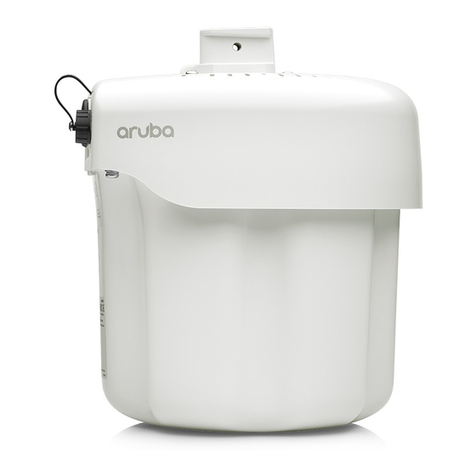
6Aruba 340 Series Campus Access Point | Installation Guide
Pre-Installation Checklist
Before installing your 203R Series access point, be sure that you have the following:
Cat5E UTP cable with network access installed in the wall box
DC power cable
One of the following network services:
Aruba Discovery Protocol (ADP)
DNS server with an “A” record
DHCP Server with vendor-specific options
Identifying Specific Installation Locations
This access point should be oriented vertically, with rubber pads facing downward to facilitate maximum
antenna gain. Use the access point placement map generated by Aruba RF Plan software application to
determine the proper installation location(s). Each location should be as close as possible to the center of the
intended coverage area and should be free from obstructions or obvious sources of interference. These RF
absorbers/reflectors/interference sources will impact RF propagation and should be accounted for during the
planning phase and adjusted for in RF plan.
Identifying Known RF Absorbers/Reflectors/Interference Sources
Identifying known RF absorbers, reflectors, and interference sources while in the field during the installation
phase is critical. Make sure that these sources are taken into consideration when you attach an access point to its
fixed location.
RF absorbers include:
Cement/concrete—Old concrete has high levels of water dissipation, which dries out the concrete, allowing
for potential RF propagation. New concrete has high levels of water concentration in the concrete, blocking
RF signals.
Natural Items—Fish tanks, water fountains, ponds, and trees
Brick
RF reflectors include:
Metal Objects—Metal pans between floors, rebar, fire doors, air conditioning/heating ducts, mesh windows,
blinds, chain link fences (depending on aperture size), refrigerators, racks, shelves, and filing cabinets.
Do not place an access point between two air conditioning/heating ducts. Make sure that access points are
placed below ducts to avoid RF disturbances.
RF interference sources include:
Microwave ovens and other 2.4 or 5 GHz objects (such as cordless phones)
Cordless headset such as those used in call centers or lunch rooms
Access Point Installation
The 340 Series ships with two ceiling rail adapters for 9/16” and 15/16” ceiling rails. Additional wall mount
adapters and ceiling rail adapters for other rail styles are available as accessory kits.
1. Pull the necessary cables through a prepared hole in the ceiling tile near where the access point will be
placed.
2. Place the adapter against the back of the access point with the adapter at an angle of approximately 30
degrees to the tabs (see Figure 6).
3. Twist the adapter clockwise until it snaps into place in the tabs (see Figure 6).
This device in compliance with governmental requirements, and is designed the so that only authorized network
administrators can change the settings. For more information about access point configuration, refer to the
ArubaOS Quick Start Guide and ArubaOS User Guide.
The installer is responsible for securing the access point onto the ceiling tile rail in accordance with the
steps below. Failure to properly install this product may result in physical injury and/or damage to
property.
